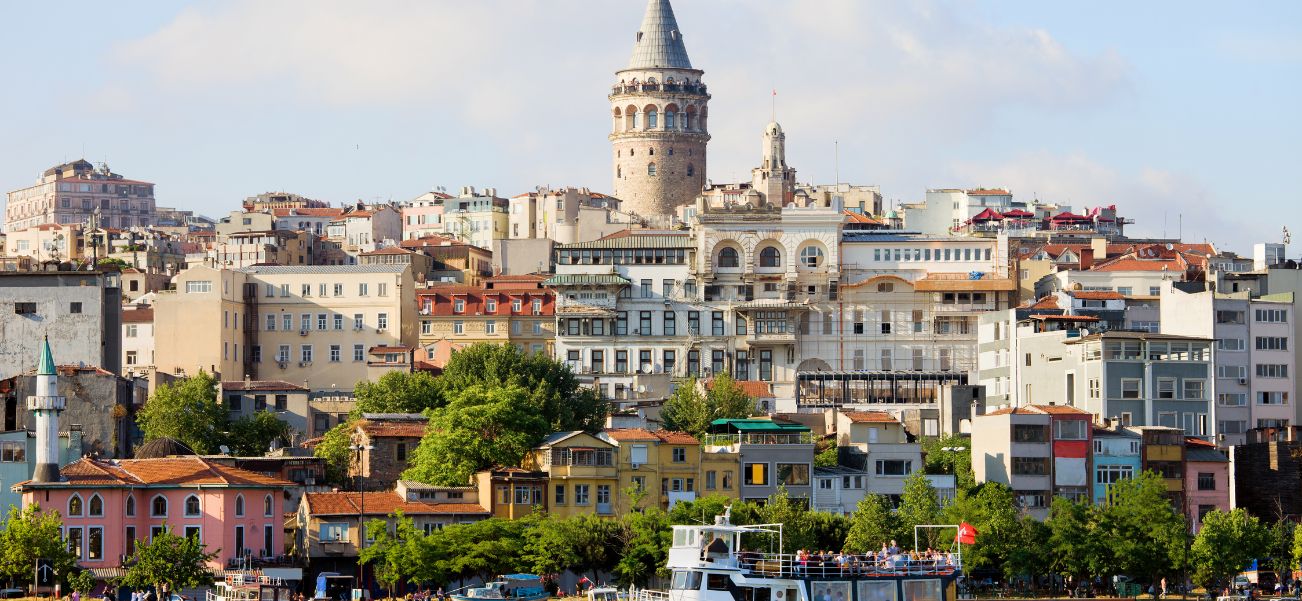
The Epic Lycian Way Hike in Turkey
What is the Lycian Way, one of the top 10 most beautiful long distance hikes in the world!
The Lycian Way is a 509 km, waymarked hiking trail along the ancient Lycian coast from Fethiye to Antalya.
The Lycian Way offers for hikers rocky coastlines, deserted beaches, pine forests, mountain peaks and ancient ruins.
Plus you will encounter generous people in the villages, where you can stop and have something to eat and rest.
Learning Turkish? Become a DTC member and get the full access to the bookstore!
Lycian Way Hike in Turkey
Brief History of Lycia
The Lycian Way, researched, designed and waymarked by Kate Clow in 1999, a British / Turkish amateur historian, takes its name from the ancient civilization, which once ruled the area.
Lycia is the historical name of the Tekke Peninsula located in Muğla and Antalya city along the Mediterranean Sea on Turkey's southern coast.
- The strategic position of Lycia gave them a unique opportunity for sea-trade and for piracy.
- After Persian rule, the Lycians welcomed Alexander the Great and absorbed Greek culture.
- Lycia became a province of the Roman Empire. The Romans developed many cities and ports, linking them with paved roads and equipping them with theatres, baths, forums, temples and ceremonial gates.
- From the 4th BC, Christianity took hold and, as the Roman empire crumbled, many Byzantine monasteries were founded in the Lycian hills. Lycian graves and ruins abound on the peninsula and the Lycian Way passes about 25 remote historical sites.
The Lycians were portrayed as democratic and independent individuals. Their standard of living was high. They established a distinctive artistic style, as evidenced by their artifacts.
They benefited greatly from their geographic location, which allowed for piracy and sea trade. Persian control was observed, and subsequently, Alexander the Great was welcomed by the Lycians. The Greek way of life had an impact on them.
The rule of the Roman Empire followed. Ports, roads, theaters, temples, and other projects were all taking place at this period. Christianity gained popularity starting in the fourth century as the Roman empire collapsed. Thus, numerous Byzantine monasteries were built on the Lycian highlands.
Characteristics of the Lycian Way
Here are what the notable characteristics of the Lycian Way are:
- Rough terrain, but largely on well-maintained routes.
- Waymarkings of average quality; GPS tracks and/or our mobile app are strongly advised.
- Awe-inspiring landscape with craggy mountains, active agricultural deltas, extensive stretches of coastline with clear waters and unspoiled beaches, quaint towns and villages, undiscovered rocky coves, glowing rocks, caves, and more.
- Tripping over the old ruin sites.
- Can be completed without camping, however some sections must be skipped.
- If you choose to camp, you can do it practically anywhere.
- Very good local transportation.
- A nice variety of sights, activities, and experiences keeps the path interesting at all times.
- Affordable prices for lodging and meals.
- Outside of the big towns, Turkish is typically the only language spoken, yet the locals are incredibly welcoming and patient with visitors (learning even just a handful of Turkish words will take you a long way).
- Very safe, friendly and supportive neighbors.
- Drinking water is generally easy to come by, although there are some areas (which can be avoided if preferred) where water is scarce for much of the year and extra must be taken with you.
- Can be done in either direction. West to east or east to west. However most people choose to walk it from west to east.
- It is simple to skip any sections if you are short on time or don't find them interesting.
- Turkish hospitality is well-known, especially in the outlying areas.
When to hike the Lycian Way
The Lycian Way is a year-round endeavor. The finest seasons, however, are typically spring and fall because of the moderate temperatures and low humidity. Water sources are more likely to actually have water in the spring, which might be helpful in some of the more distant areas.
The majority of the path will be very quiet in both the spring and the fall; in fact, there will be several days when you see no one at all. The drawback is that many pensions will close (though you will still normally have no problem finding available rooms).
Mountain areas must be avoided if you don't have winter-rated equipment because winter brings some chilly evenings up there. Only really skilled winter hikers should try some of the mountain parts in the winter.
On the other side, summer is really hot. You might choose one of the other seasons unless you have prior experience hiking in hot weather. Even if this means extending the duration of your vacation, attempt to hike extremely early in the morning before the peak heat of the day sets in if you do decide to trek in the summer. Additionally, some portions have a dearth of cover that should be avoided entirely in favor of the sections that are higher up.
Enjoy your Lycian Way hike in Turkey!













